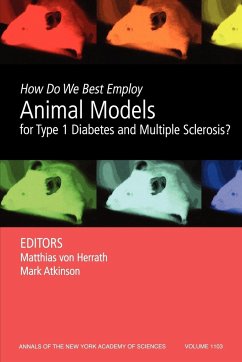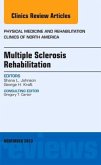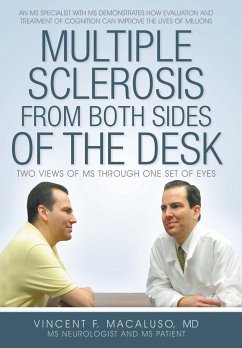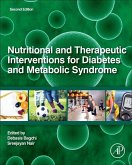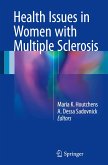Matthias Herrath / Mark Atkinson / David A. Hafler / Bart O. Roep (eds.)
How Do We Best Employ Animal Models for Type 1 Diabetes and Multiple Sclerosis?, Volume 1103
Herausgeber: Herrath, Matthias von; Roep, Bart O; Hafler, David A; Atkinson, Mark A
Matthias Herrath / Mark Atkinson / David A. Hafler / Bart O. Roep (eds.)
How Do We Best Employ Animal Models for Type 1 Diabetes and Multiple Sclerosis?, Volume 1103
Herausgeber: Herrath, Matthias von; Roep, Bart O; Hafler, David A; Atkinson, Mark A
- Broschiertes Buch
- Merkliste
- Auf die Merkliste
- Bewerten Bewerten
- Teilen
- Produkt teilen
- Produkterinnerung
- Produkterinnerung
Our understanding of the genetics and pathophysiology of animal models for autoimmune diseases such as type 1 diabetes and multiple sclerosis has increased significantly in the past few years. The central themes of this volume are the necessity for novel and improved models, the optimal use of information from animal models to understand pathogenesis of the human disease, and the rational development of novel immunotherapeutics. This volume is intended to foster discussion on the utility of currently available animal models, to suggest methods for improving upon present models, and to advance…mehr
Andere Kunden interessierten sich auch für
![Prevention of Type 2 Diabetes Prevention of Type 2 Diabetes]() Manfred GanzPrevention of Type 2 Diabetes258,99 €
Manfred GanzPrevention of Type 2 Diabetes258,99 €![Multiple Sclerosis Rehabilitation, an Issue of Physical Medicine and Rehabilitation Clinics Multiple Sclerosis Rehabilitation, an Issue of Physical Medicine and Rehabilitation Clinics]() Shana L. JohnsonMultiple Sclerosis Rehabilitation, an Issue of Physical Medicine and Rehabilitation Clinics115,99 €
Shana L. JohnsonMultiple Sclerosis Rehabilitation, an Issue of Physical Medicine and Rehabilitation Clinics115,99 €![Multiple Sclerosis from Both Sides of the Desk Multiple Sclerosis from Both Sides of the Desk]() Vincent F MacalusoMultiple Sclerosis from Both Sides of the Desk31,99 €
Vincent F MacalusoMultiple Sclerosis from Both Sides of the Desk31,99 €![Nutraceuticals, Glycemic Health and Type 2 Diabetes Nutraceuticals, Glycemic Health and Type 2 Diabetes]() Nutraceuticals, Glycemic Health and Type 2 Diabetes336,99 €
Nutraceuticals, Glycemic Health and Type 2 Diabetes336,99 €![Nutritional and Therapeutic Interventions for Diabetes and Metabolic Syndrome Nutritional and Therapeutic Interventions for Diabetes and Metabolic Syndrome]() Nutritional and Therapeutic Interventions for Diabetes and Metabolic Syndrome128,99 €
Nutritional and Therapeutic Interventions for Diabetes and Metabolic Syndrome128,99 €![Immunology of Diabetes V Immunology of Diabetes V]() Immunology of Diabetes V193,99 €
Immunology of Diabetes V193,99 €![Health Issues in Women with Multiple Sclerosis Health Issues in Women with Multiple Sclerosis]() Health Issues in Women with Multiple Sclerosis66,99 €
Health Issues in Women with Multiple Sclerosis66,99 €-
-
-
Our understanding of the genetics and pathophysiology of animal models for autoimmune diseases such as type 1 diabetes and multiple sclerosis has increased significantly in the past few years. The central themes of this volume are the necessity for novel and improved models, the optimal use of information from animal models to understand pathogenesis of the human disease, and the rational development of novel immunotherapeutics. This volume is intended to foster discussion on the utility of currently available animal models, to suggest methods for improving upon present models, and to advance translational research in these fields. NOTE: Annals volumes are available for sale as individual books or as a journal. For information on institutional journal subscriptions, please visit www.blackwellpublishing.com/nyas. ACADEMY MEMBERS: Please contact the New York Academy of Sciences directly to place your order (www.nyas.org). Members of the New York Academy of Science receive full-text access to the Annals online and discounts on print volumes. Please visit www.nyas.org/membership/main.asp for more information about becoming a member.
Hinweis: Dieser Artikel kann nur an eine deutsche Lieferadresse ausgeliefert werden.
Hinweis: Dieser Artikel kann nur an eine deutsche Lieferadresse ausgeliefert werden.
Produktdetails
- Produktdetails
- Verlag: Wiley
- Seitenzahl: 300
- Erscheinungstermin: 14. Mai 2007
- Englisch
- Abmessung: 229mm x 152mm x 13mm
- Gewicht: 349g
- ISBN-13: 9781573316781
- ISBN-10: 1573316784
- Artikelnr.: 22758203
- Herstellerkennzeichnung
- Libri GmbH
- Europaallee 1
- 36244 Bad Hersfeld
- gpsr@libri.de
- Verlag: Wiley
- Seitenzahl: 300
- Erscheinungstermin: 14. Mai 2007
- Englisch
- Abmessung: 229mm x 152mm x 13mm
- Gewicht: 349g
- ISBN-13: 9781573316781
- ISBN-10: 1573316784
- Artikelnr.: 22758203
- Herstellerkennzeichnung
- Libri GmbH
- Europaallee 1
- 36244 Bad Hersfeld
- gpsr@libri.de
Matthias Von Herrath is the editor of How Do We Best Employ Animal Models for Type 1 Diabetes and Multiple Sclerosis?, Volume 1103, published by Wiley. Mark Atkinson is a medical researcher best known for his contributions to research seeking to predict, prevent, and cure type 1 diabetes. He is the author of over 425 publications and is one of the world's most cited diabetes researchers.
Introduction. Part I: Controversies Surrounding the Use of Animal Models in Type 1 Diabetes and Multiple Sclerosis:. 1. Are Insights Gained from NOD Mice Sufficient to Guide Clinical Translation? Another Inconvenient Truth: Bart O. Roep. 2. Building Different Mouse Models for Human MS: Estelle Bettelli. 3. Autoimmunity and ß Cell Regeneration in Mouse and Human Type 1 Diabetes. The Peace Is Not Enough: Vitaly Ablamunits
Nicole A. Sherry
Jake A. Kushner
and Kevan C. Herold. 4. Diabetes Research in Jeopardy: The Extinction of Clinical Diabetes Researchers: Aldo A. Rossini and Dale L. Greiner. Part II. New Methods of Discovery for Questions of Pathogenesis and Therapy:. In Silico. 5. The Virtual NOD Mouse: Applying Predictive Biosimulation to Research in Type 1 Diabetes: Yanan Zheng
Huub T. C. Kreuwel
Daniel L. Young
Lisl K. M. Shoda
Saroja Ramanujan
Kapil G. Gadkar
Mark A. Atkinson
and Chan C. Whiting. 6. Dosing and Timing Effects of Anti-CD40L Therapy: Predictions from a Mathematical Model of Type 1 Diabetes: Kapil G. Gadkar
Lisl K. M. Shoda
Huub T. C. Kreuwel
Saroja Ramanujan
Yanan Zheng
Chan C. Whiting
and Daniel L. Young. Humanized
Transgenic
or Congenic Models. 7. Autoreactive T Cells in a Partially Humanized Murine Model of T1D: John A. Gebe
Ben Falk
Kellee Unrath
and Gerald T. Nepom. 8. Humanized NOD/LtSz-scid IL2 Receptor Common Gamma Chain Knockout Mice in Diabetes Research: Leonard D. Shultz
Todd Pearson
Marie King
Lisa Giassi
Lisa Carney
Bruce Gott
Bonnie Lyons
Aldo A. Rossini
and Dale L. Greiner. 9. Development of New-Generation HU-PBMC-NOD/SCID Mice to Study Human Islet Alloreactivity: Marie King
Todd Pearson
Leonard D. Shultz
Jean Leif
Rita Bottino
Massimo Trucco
Mark Atkinson
Clive Wasserfall
Kevan Herold
John P. Mordes
Aldo A. Rossini
and Dale L. Greiner. 10. Resistance to the Induction of Mixed Chimerism in Spontaneously Diabetic NOD Mice Depends on the CD40/CD154 Pathway and Donor MHC Disparity: Bin Luo
Tao Wu
Yisheng Pan
Hakan Sozen
Jianqiang Hao
Yu Zhang
David E. R. Sutherland
Bernhard J. Hering
and Zhiguang Guo. 11. "Humanized" HLA Transgenic NOD Mice to Identify Pancreatic ß Cell Autoantigens of Potential Clinical Relevance to Type 1 Diabetes: David V. Serreze
Michele P. Marron
and Teresa P. Dilorenzo. 12. A New Humanized HLA Transgenic Mouse Model of Multiple Sclerosis Expressing Class II on Mouse CD4 T Cells: Ashutosh Mangalam
Moses Rodriguez
and Chella David. 13. The Use of Idd Congenic Mice to Identify Checkpoints of Peripheral Tolerance to Islet Antigen: Emma E. Hamilton-Williams
Xavier Martinez
Michael Lyman
Kara Hunter
Linda S. Wicker
and Linda A. Sherman. 14. Refinement of the Iddm4 Diabetes Susceptibility Locus Reveals TCRVß4 as a Candidate Gene: Elizabeth P. Blankenhorn
Cheryl Descipio
Lucy Rodemich
Laura Cort
Jean H. Leif
Dale L. Greiner
and John P. Mordes. Viral
Antigen
or Cell-Induced Models. 15. Cytotoxic T Cell-Mediated Diabetes in RIP-CD80 Transgenic Mice: Autoantigen Peptide Sensitivity and Fine Specificity: Klaus Pechhold
Sagarika Chakrabarty
and David M. Harlan. 16. Coxsackievirus Infections and NOD Mice: Relevant Models of Protection from
and Induction of
Type 1 Diabetes: Steven Tracy and Kristen M. Drescher. 17. Establishment of a Model to Examine the Early Events Involved in the Development of Virus-Induced Demyelinating Lesions: Kristen M. Drescher and Steven Tracy. 18. Experimental Autoimmune Encephalomyelitis Mediated by CD8+ T Cells: Qingyong Ji and Joan Goverman. 19. Impaired T Cell Receptor Signaling in Foxp3+ CD4 T Cells: Bryan D. Carson and Steven F. Ziegler. 20. Antigen Presentation in the CNS by Myeloid Dendritic Cells Drives Progression of Relapsing Experimental Autoimmune Encephalomyelitis: Stephen D. Miller
Eileen J. Mcmahon
Bettina Schreiner
and Samantha L. Bailey. 21. Human Clonal CD8 Autoreactivity to an IGRP Islet Epitope Shared between Mice and Men: W.W.J. Unger
G.G.M. Pinkse
S. Mulder-Van Der Kracht
A.R. Van Der Slik
M.G.D. Kester
F. Ossendorp
J.W. Drijfhout
D.V. Serreze
and B.O. Roep. Complications. 22. Matrix Metalloproteinase-2 Expression and Apoptogenic Activity in Retinal Pericytes: Implications in Diabetic Retinopathy: Ru Yang
Haibo Liu
Iyesha Williams
and Brahim Chaqour. 23. Mouse Models for Studies of Cardiovascular Complications of Type 1 Diabetes: Xia Shen and Karin E. Bornfeldt. Index of Contributors.
Nicole A. Sherry
Jake A. Kushner
and Kevan C. Herold. 4. Diabetes Research in Jeopardy: The Extinction of Clinical Diabetes Researchers: Aldo A. Rossini and Dale L. Greiner. Part II. New Methods of Discovery for Questions of Pathogenesis and Therapy:. In Silico. 5. The Virtual NOD Mouse: Applying Predictive Biosimulation to Research in Type 1 Diabetes: Yanan Zheng
Huub T. C. Kreuwel
Daniel L. Young
Lisl K. M. Shoda
Saroja Ramanujan
Kapil G. Gadkar
Mark A. Atkinson
and Chan C. Whiting. 6. Dosing and Timing Effects of Anti-CD40L Therapy: Predictions from a Mathematical Model of Type 1 Diabetes: Kapil G. Gadkar
Lisl K. M. Shoda
Huub T. C. Kreuwel
Saroja Ramanujan
Yanan Zheng
Chan C. Whiting
and Daniel L. Young. Humanized
Transgenic
or Congenic Models. 7. Autoreactive T Cells in a Partially Humanized Murine Model of T1D: John A. Gebe
Ben Falk
Kellee Unrath
and Gerald T. Nepom. 8. Humanized NOD/LtSz-scid IL2 Receptor Common Gamma Chain Knockout Mice in Diabetes Research: Leonard D. Shultz
Todd Pearson
Marie King
Lisa Giassi
Lisa Carney
Bruce Gott
Bonnie Lyons
Aldo A. Rossini
and Dale L. Greiner. 9. Development of New-Generation HU-PBMC-NOD/SCID Mice to Study Human Islet Alloreactivity: Marie King
Todd Pearson
Leonard D. Shultz
Jean Leif
Rita Bottino
Massimo Trucco
Mark Atkinson
Clive Wasserfall
Kevan Herold
John P. Mordes
Aldo A. Rossini
and Dale L. Greiner. 10. Resistance to the Induction of Mixed Chimerism in Spontaneously Diabetic NOD Mice Depends on the CD40/CD154 Pathway and Donor MHC Disparity: Bin Luo
Tao Wu
Yisheng Pan
Hakan Sozen
Jianqiang Hao
Yu Zhang
David E. R. Sutherland
Bernhard J. Hering
and Zhiguang Guo. 11. "Humanized" HLA Transgenic NOD Mice to Identify Pancreatic ß Cell Autoantigens of Potential Clinical Relevance to Type 1 Diabetes: David V. Serreze
Michele P. Marron
and Teresa P. Dilorenzo. 12. A New Humanized HLA Transgenic Mouse Model of Multiple Sclerosis Expressing Class II on Mouse CD4 T Cells: Ashutosh Mangalam
Moses Rodriguez
and Chella David. 13. The Use of Idd Congenic Mice to Identify Checkpoints of Peripheral Tolerance to Islet Antigen: Emma E. Hamilton-Williams
Xavier Martinez
Michael Lyman
Kara Hunter
Linda S. Wicker
and Linda A. Sherman. 14. Refinement of the Iddm4 Diabetes Susceptibility Locus Reveals TCRVß4 as a Candidate Gene: Elizabeth P. Blankenhorn
Cheryl Descipio
Lucy Rodemich
Laura Cort
Jean H. Leif
Dale L. Greiner
and John P. Mordes. Viral
Antigen
or Cell-Induced Models. 15. Cytotoxic T Cell-Mediated Diabetes in RIP-CD80 Transgenic Mice: Autoantigen Peptide Sensitivity and Fine Specificity: Klaus Pechhold
Sagarika Chakrabarty
and David M. Harlan. 16. Coxsackievirus Infections and NOD Mice: Relevant Models of Protection from
and Induction of
Type 1 Diabetes: Steven Tracy and Kristen M. Drescher. 17. Establishment of a Model to Examine the Early Events Involved in the Development of Virus-Induced Demyelinating Lesions: Kristen M. Drescher and Steven Tracy. 18. Experimental Autoimmune Encephalomyelitis Mediated by CD8+ T Cells: Qingyong Ji and Joan Goverman. 19. Impaired T Cell Receptor Signaling in Foxp3+ CD4 T Cells: Bryan D. Carson and Steven F. Ziegler. 20. Antigen Presentation in the CNS by Myeloid Dendritic Cells Drives Progression of Relapsing Experimental Autoimmune Encephalomyelitis: Stephen D. Miller
Eileen J. Mcmahon
Bettina Schreiner
and Samantha L. Bailey. 21. Human Clonal CD8 Autoreactivity to an IGRP Islet Epitope Shared between Mice and Men: W.W.J. Unger
G.G.M. Pinkse
S. Mulder-Van Der Kracht
A.R. Van Der Slik
M.G.D. Kester
F. Ossendorp
J.W. Drijfhout
D.V. Serreze
and B.O. Roep. Complications. 22. Matrix Metalloproteinase-2 Expression and Apoptogenic Activity in Retinal Pericytes: Implications in Diabetic Retinopathy: Ru Yang
Haibo Liu
Iyesha Williams
and Brahim Chaqour. 23. Mouse Models for Studies of Cardiovascular Complications of Type 1 Diabetes: Xia Shen and Karin E. Bornfeldt. Index of Contributors.
Introduction. Part I: Controversies Surrounding the Use of Animal Models in Type 1 Diabetes and Multiple Sclerosis:. 1. Are Insights Gained from NOD Mice Sufficient to Guide Clinical Translation? Another Inconvenient Truth: Bart O. Roep. 2. Building Different Mouse Models for Human MS: Estelle Bettelli. 3. Autoimmunity and ß Cell Regeneration in Mouse and Human Type 1 Diabetes. The Peace Is Not Enough: Vitaly Ablamunits
Nicole A. Sherry
Jake A. Kushner
and Kevan C. Herold. 4. Diabetes Research in Jeopardy: The Extinction of Clinical Diabetes Researchers: Aldo A. Rossini and Dale L. Greiner. Part II. New Methods of Discovery for Questions of Pathogenesis and Therapy:. In Silico. 5. The Virtual NOD Mouse: Applying Predictive Biosimulation to Research in Type 1 Diabetes: Yanan Zheng
Huub T. C. Kreuwel
Daniel L. Young
Lisl K. M. Shoda
Saroja Ramanujan
Kapil G. Gadkar
Mark A. Atkinson
and Chan C. Whiting. 6. Dosing and Timing Effects of Anti-CD40L Therapy: Predictions from a Mathematical Model of Type 1 Diabetes: Kapil G. Gadkar
Lisl K. M. Shoda
Huub T. C. Kreuwel
Saroja Ramanujan
Yanan Zheng
Chan C. Whiting
and Daniel L. Young. Humanized
Transgenic
or Congenic Models. 7. Autoreactive T Cells in a Partially Humanized Murine Model of T1D: John A. Gebe
Ben Falk
Kellee Unrath
and Gerald T. Nepom. 8. Humanized NOD/LtSz-scid IL2 Receptor Common Gamma Chain Knockout Mice in Diabetes Research: Leonard D. Shultz
Todd Pearson
Marie King
Lisa Giassi
Lisa Carney
Bruce Gott
Bonnie Lyons
Aldo A. Rossini
and Dale L. Greiner. 9. Development of New-Generation HU-PBMC-NOD/SCID Mice to Study Human Islet Alloreactivity: Marie King
Todd Pearson
Leonard D. Shultz
Jean Leif
Rita Bottino
Massimo Trucco
Mark Atkinson
Clive Wasserfall
Kevan Herold
John P. Mordes
Aldo A. Rossini
and Dale L. Greiner. 10. Resistance to the Induction of Mixed Chimerism in Spontaneously Diabetic NOD Mice Depends on the CD40/CD154 Pathway and Donor MHC Disparity: Bin Luo
Tao Wu
Yisheng Pan
Hakan Sozen
Jianqiang Hao
Yu Zhang
David E. R. Sutherland
Bernhard J. Hering
and Zhiguang Guo. 11. "Humanized" HLA Transgenic NOD Mice to Identify Pancreatic ß Cell Autoantigens of Potential Clinical Relevance to Type 1 Diabetes: David V. Serreze
Michele P. Marron
and Teresa P. Dilorenzo. 12. A New Humanized HLA Transgenic Mouse Model of Multiple Sclerosis Expressing Class II on Mouse CD4 T Cells: Ashutosh Mangalam
Moses Rodriguez
and Chella David. 13. The Use of Idd Congenic Mice to Identify Checkpoints of Peripheral Tolerance to Islet Antigen: Emma E. Hamilton-Williams
Xavier Martinez
Michael Lyman
Kara Hunter
Linda S. Wicker
and Linda A. Sherman. 14. Refinement of the Iddm4 Diabetes Susceptibility Locus Reveals TCRVß4 as a Candidate Gene: Elizabeth P. Blankenhorn
Cheryl Descipio
Lucy Rodemich
Laura Cort
Jean H. Leif
Dale L. Greiner
and John P. Mordes. Viral
Antigen
or Cell-Induced Models. 15. Cytotoxic T Cell-Mediated Diabetes in RIP-CD80 Transgenic Mice: Autoantigen Peptide Sensitivity and Fine Specificity: Klaus Pechhold
Sagarika Chakrabarty
and David M. Harlan. 16. Coxsackievirus Infections and NOD Mice: Relevant Models of Protection from
and Induction of
Type 1 Diabetes: Steven Tracy and Kristen M. Drescher. 17. Establishment of a Model to Examine the Early Events Involved in the Development of Virus-Induced Demyelinating Lesions: Kristen M. Drescher and Steven Tracy. 18. Experimental Autoimmune Encephalomyelitis Mediated by CD8+ T Cells: Qingyong Ji and Joan Goverman. 19. Impaired T Cell Receptor Signaling in Foxp3+ CD4 T Cells: Bryan D. Carson and Steven F. Ziegler. 20. Antigen Presentation in the CNS by Myeloid Dendritic Cells Drives Progression of Relapsing Experimental Autoimmune Encephalomyelitis: Stephen D. Miller
Eileen J. Mcmahon
Bettina Schreiner
and Samantha L. Bailey. 21. Human Clonal CD8 Autoreactivity to an IGRP Islet Epitope Shared between Mice and Men: W.W.J. Unger
G.G.M. Pinkse
S. Mulder-Van Der Kracht
A.R. Van Der Slik
M.G.D. Kester
F. Ossendorp
J.W. Drijfhout
D.V. Serreze
and B.O. Roep. Complications. 22. Matrix Metalloproteinase-2 Expression and Apoptogenic Activity in Retinal Pericytes: Implications in Diabetic Retinopathy: Ru Yang
Haibo Liu
Iyesha Williams
and Brahim Chaqour. 23. Mouse Models for Studies of Cardiovascular Complications of Type 1 Diabetes: Xia Shen and Karin E. Bornfeldt. Index of Contributors.
Nicole A. Sherry
Jake A. Kushner
and Kevan C. Herold. 4. Diabetes Research in Jeopardy: The Extinction of Clinical Diabetes Researchers: Aldo A. Rossini and Dale L. Greiner. Part II. New Methods of Discovery for Questions of Pathogenesis and Therapy:. In Silico. 5. The Virtual NOD Mouse: Applying Predictive Biosimulation to Research in Type 1 Diabetes: Yanan Zheng
Huub T. C. Kreuwel
Daniel L. Young
Lisl K. M. Shoda
Saroja Ramanujan
Kapil G. Gadkar
Mark A. Atkinson
and Chan C. Whiting. 6. Dosing and Timing Effects of Anti-CD40L Therapy: Predictions from a Mathematical Model of Type 1 Diabetes: Kapil G. Gadkar
Lisl K. M. Shoda
Huub T. C. Kreuwel
Saroja Ramanujan
Yanan Zheng
Chan C. Whiting
and Daniel L. Young. Humanized
Transgenic
or Congenic Models. 7. Autoreactive T Cells in a Partially Humanized Murine Model of T1D: John A. Gebe
Ben Falk
Kellee Unrath
and Gerald T. Nepom. 8. Humanized NOD/LtSz-scid IL2 Receptor Common Gamma Chain Knockout Mice in Diabetes Research: Leonard D. Shultz
Todd Pearson
Marie King
Lisa Giassi
Lisa Carney
Bruce Gott
Bonnie Lyons
Aldo A. Rossini
and Dale L. Greiner. 9. Development of New-Generation HU-PBMC-NOD/SCID Mice to Study Human Islet Alloreactivity: Marie King
Todd Pearson
Leonard D. Shultz
Jean Leif
Rita Bottino
Massimo Trucco
Mark Atkinson
Clive Wasserfall
Kevan Herold
John P. Mordes
Aldo A. Rossini
and Dale L. Greiner. 10. Resistance to the Induction of Mixed Chimerism in Spontaneously Diabetic NOD Mice Depends on the CD40/CD154 Pathway and Donor MHC Disparity: Bin Luo
Tao Wu
Yisheng Pan
Hakan Sozen
Jianqiang Hao
Yu Zhang
David E. R. Sutherland
Bernhard J. Hering
and Zhiguang Guo. 11. "Humanized" HLA Transgenic NOD Mice to Identify Pancreatic ß Cell Autoantigens of Potential Clinical Relevance to Type 1 Diabetes: David V. Serreze
Michele P. Marron
and Teresa P. Dilorenzo. 12. A New Humanized HLA Transgenic Mouse Model of Multiple Sclerosis Expressing Class II on Mouse CD4 T Cells: Ashutosh Mangalam
Moses Rodriguez
and Chella David. 13. The Use of Idd Congenic Mice to Identify Checkpoints of Peripheral Tolerance to Islet Antigen: Emma E. Hamilton-Williams
Xavier Martinez
Michael Lyman
Kara Hunter
Linda S. Wicker
and Linda A. Sherman. 14. Refinement of the Iddm4 Diabetes Susceptibility Locus Reveals TCRVß4 as a Candidate Gene: Elizabeth P. Blankenhorn
Cheryl Descipio
Lucy Rodemich
Laura Cort
Jean H. Leif
Dale L. Greiner
and John P. Mordes. Viral
Antigen
or Cell-Induced Models. 15. Cytotoxic T Cell-Mediated Diabetes in RIP-CD80 Transgenic Mice: Autoantigen Peptide Sensitivity and Fine Specificity: Klaus Pechhold
Sagarika Chakrabarty
and David M. Harlan. 16. Coxsackievirus Infections and NOD Mice: Relevant Models of Protection from
and Induction of
Type 1 Diabetes: Steven Tracy and Kristen M. Drescher. 17. Establishment of a Model to Examine the Early Events Involved in the Development of Virus-Induced Demyelinating Lesions: Kristen M. Drescher and Steven Tracy. 18. Experimental Autoimmune Encephalomyelitis Mediated by CD8+ T Cells: Qingyong Ji and Joan Goverman. 19. Impaired T Cell Receptor Signaling in Foxp3+ CD4 T Cells: Bryan D. Carson and Steven F. Ziegler. 20. Antigen Presentation in the CNS by Myeloid Dendritic Cells Drives Progression of Relapsing Experimental Autoimmune Encephalomyelitis: Stephen D. Miller
Eileen J. Mcmahon
Bettina Schreiner
and Samantha L. Bailey. 21. Human Clonal CD8 Autoreactivity to an IGRP Islet Epitope Shared between Mice and Men: W.W.J. Unger
G.G.M. Pinkse
S. Mulder-Van Der Kracht
A.R. Van Der Slik
M.G.D. Kester
F. Ossendorp
J.W. Drijfhout
D.V. Serreze
and B.O. Roep. Complications. 22. Matrix Metalloproteinase-2 Expression and Apoptogenic Activity in Retinal Pericytes: Implications in Diabetic Retinopathy: Ru Yang
Haibo Liu
Iyesha Williams
and Brahim Chaqour. 23. Mouse Models for Studies of Cardiovascular Complications of Type 1 Diabetes: Xia Shen and Karin E. Bornfeldt. Index of Contributors.

